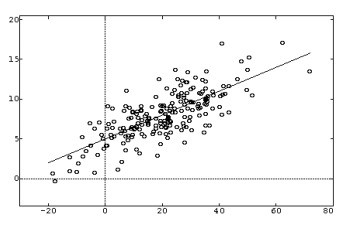This Wobbling Earth!
by Don Elvig
(Kirkwood, Missouri USA)
The earth spins on an axis while on it's annual orbit around the sun in a position relatively perpendicular to the sun. But, not quite in a perpendicular position. There is a slight tilt to our axis, which gives us seasons.
We, of course have summer in the northern hemisphere when the north pole is tilted toward the sun and the sun rays are more direct on the northern half of the world for a longer period of time each day. When we have traveled 180 degrees in our journey around the sun, the south pole is now tilted toward the sun.
Now it is time for our buddies in the south to enjoy the beach tanning season while new igloos are the preoccupation of those in the far north.
During it's spinning through space on it's somewhat usual orbit around the sun our somewhat stable earth wobbles a bit; like a kid's toy top. It doesn't suddenly wobble back and forth like the top. It wobbles relatively slowly.
Others who have studied this can relate the frequency and severity of the wobble. I just know it wobbles. In it's travels it tends to increase it's tilt to a certain point and then like a top stops it's tilt in one direction and begins tilting in a reverse direction.
The resulting effect of the tilting is the rays of the sun become more direct on a farther north position of the earth during the summer and stays there for a longer period of time.
When the more direct rays of the sun beat on a farther north position for a longer period of time a very strange event occurs: Snow and ice begin to melt!
The same event occurs six months later when the south pole gets it's turn to point more directly to the sun.
In a few years, or generations, or centuries, the earth wobble tends to right itself and people in the north/south extremities put on heavier jackets.
One more phenomenon: To add to the complexity of the wobble, the earth's path around the sun is not an exact circle. It is first eliptical and as far as I know we don't travel the same, exact road each year on our journey. Some times each year and some years (generations) we're closer to the sun than other years which also adds to increasing the heat intensity.
I don't see our being able to control this cause for global warming (and freezing) for at least another century or so.
That's what I think.
Barry's Response - The good ol' Milankovitch cycles. Our climates are affected by them on a multi-century scale. Thanks Don.
Search this site for more information now.
It is important to understand Milankovitch cycles because they provide valuable insights into long-term climate variations and the Earth's natural climate cycles.
Changes in Earth's orbit, tilt, and precession cause these cycles, named after Serbian scientist Milutin Milankovitch.
- Scientists can better understand climate change by studying Milankovitch cycles. Throughout Earth's history, glaciation and interglacial periods have alternated.
- Milankovitch cycles help us appreciate natural climate variability that's not caused by humans. Climate change is a complex phenomenon influenced by both natural and anthropogenic factors,
so it's important to take long-term trends into account.
- Moreover, Milankovitch cycles can help refine climate models and projections, so future climate patterns are more accurate. In order to mitigate and adapt to climate change, we need this knowledge.
Milankovitch cycles promote a better understanding of Earth's climate system, enhance climate literacy, and encourage informed discussions about climate change.
Comments for This Wobbling Earth!
|
||
|
||
Do you have concerns about air pollution in your area??
Perhaps modelling air pollution will provide the answers to your question.
That is what I do on a full-time basis. Find out if it is necessary for your project.
Have your Say...
on the StuffintheAir facebook page
Other topics listed in these guides:
The Stuff-in-the-Air Site Map
And,
Thank you to my research and writing assistants, ChatGPT and WordTune, as well as Wombo and others for the images.
GPT-4, OpenAI's large-scale language generation model (and others provided by Google and Meta), helped generate this text. As soon as draft language is generated, the author reviews, edits, and revises it to their own liking and is responsible for the content.



